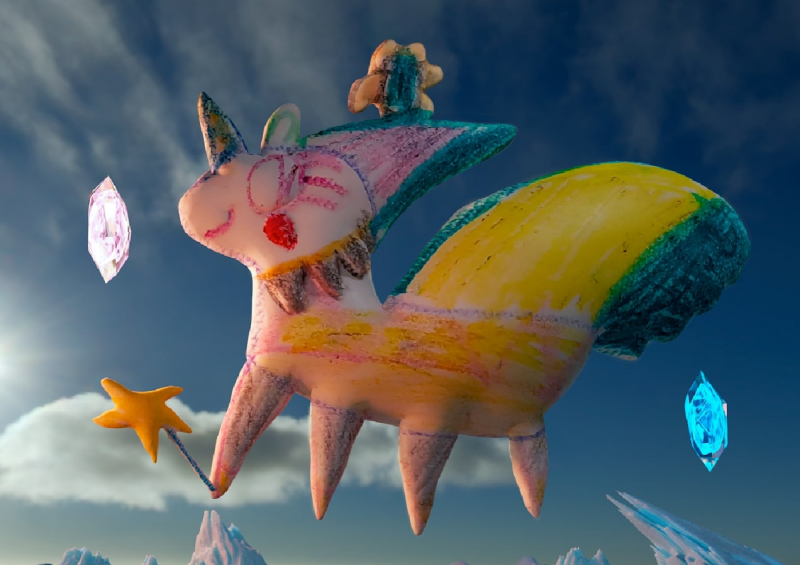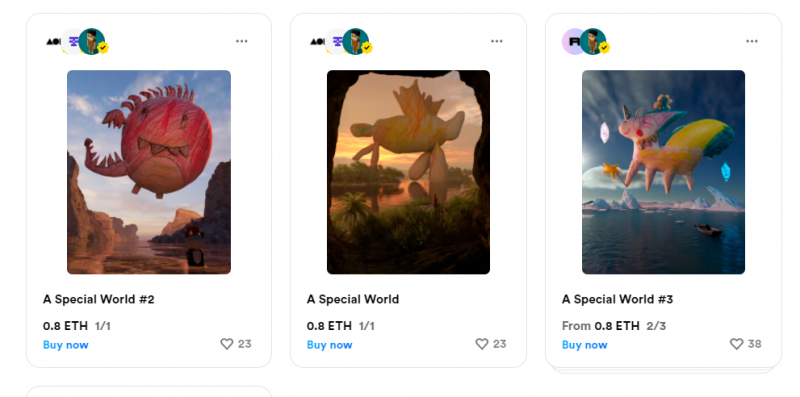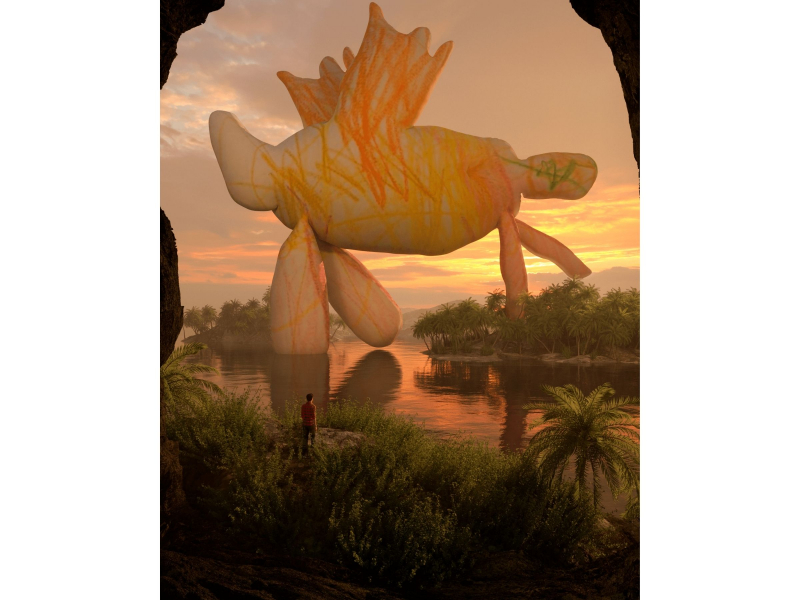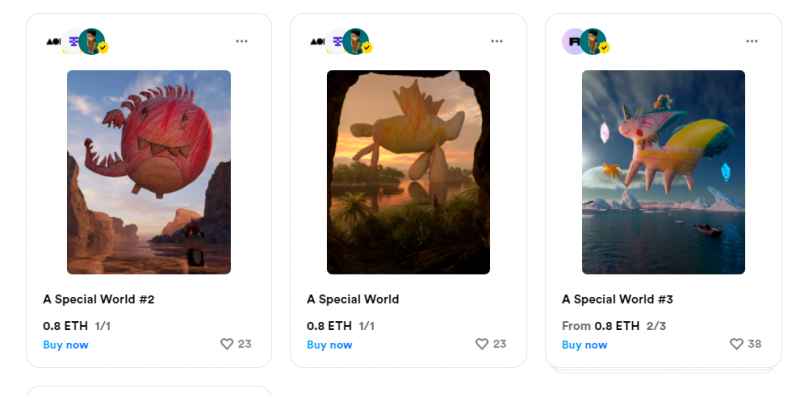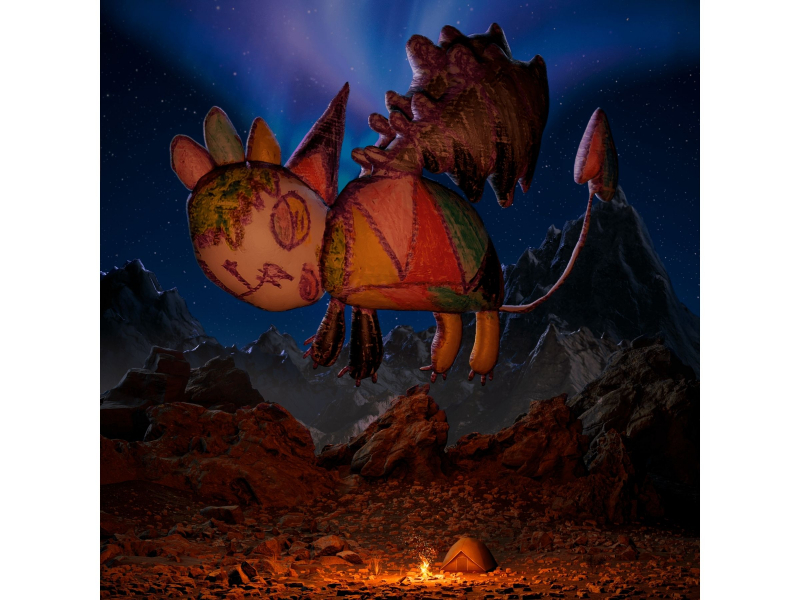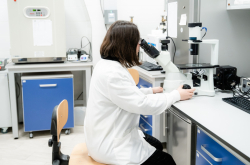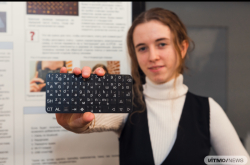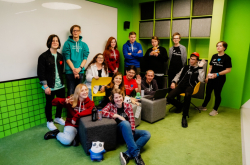How did you become interested in inclusivity and volunteering?
I did some volunteering at school, mostly in the form of making posters and videos, but back then I didn’t really know what I was doing. About a year ago, I learned about the Dobroshrift (an amalgamation of the words dobro – kindness and shrift – font, Ed.), a font where every letter was created by a child with cerebral palsy. The font was popularized by major brands to draw attention to this widespread condition. I was moved by this campaign – I realized that you could make visually stunning designs with a deeper social meaning to them.
When did you come up with the idea for your project?
Last spring, I completed the Art & Science minor at ITMO, where we could work on our own projects guided by experienced mentors. I collaborated with Olga Remneva.
I specialize in 3D graphics and back then really into online auctions and NFTs. At the same time, I’ve long been thinking about doing a project related to inclusivity – and I realized I could combine the two topics into one good idea.
Daniil Zuyev talks about working on the project (in Russian)
How did you find the Yom-Yom center? Have you worked with them before?
I’ve actually reached out to many centers but only Yom-Yom replied, which I am really grateful for. I think the others didn’t really understand what I was offering them – NFTs are still pretty much new and hard to understand for many.
Specialists from Yom-Yom were really into my project and were happy to join in. My groupmates Maria Vdovenko, Anna Salmova, and Anna Matrokhina helped me communicate with the center; together, we visited Yom-Yom and talked with the staff and children there. They also helped me host workshops for children, because I am not that good at drawing.
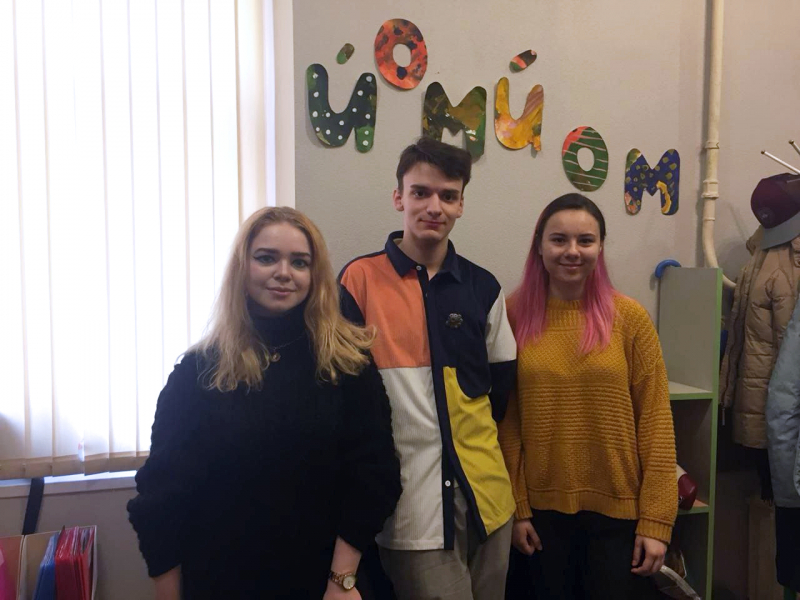
Daniil Zuyev with Anna Salmova and Anna Matrokhina at the Yom Yom inclusivity center. Photo courtesy of Daniil Zuyev
And why did you need the workshops? Wasn’t it possible to ask children to submit their works and simply digitize them?
My project is about interacting with kids despite the fact that now everything goes digital. We focused on human connection; we wanted to share our emotions with children and do something good for them.
At first, we held a trial workshop to see if the children would like it. Then, the center approved our future interaction with their mentees, and at the second workshop, we asked the kids to draw something specifically for the project. There were minimal requirements – basically, they could draw any character they liked.
It wasn’t hard for me to create the final pictures, even though it did take quite some time – I spent about a week on each one. Using the Monster Mash tool I turned each little monster into a 3D image and then using Blender I surrounded each little monster with its own color-coordinated environment. For instance, blue monsters were associated with the sea and ice, so that was where I put them. Then, I set the lighting in Cinema 4D and added final touches in Photoshop.
Did the children see the final results?
I sent the edited drawings to Yom-Yom, but I am not sure if the children got to see them – many of them had graduated from the center by the time I made the project public. I was also asked to make the drawings anonymous and I agree with this. We should be very careful so as not to do anyone harm.
Was it hard for you to understand how NFT auctions function?
There isn’t anything complicated about it, but there are some intricacies. For instance, you have to pay $50-200 for hosting and a unique ID number for each picture. These days, there are platforms that offer these services for free, but there was nothing like that when I started. So I had to save up for several months to release my first NFT.
The hardest part for me is promoting my work – this part is usually done by others who like my art. NFT platforms have turned into dumps with some incredible creations and some questionable ones, each of which get sold for millions of dollars. The marketing and sales parts of it are rather complicated, but if you are ready to spend time getting to know these aspects, then you will be able to succeed on this market with any kind of artwork.
Personally, I have never promoted my pictures, but rather tried to find some people who would be interested in my project. I have reached out to Olga Dvoretskaya, the founder of the Disartive Art & Tech Fair in Nizhny Novgorod, and she liked my creations and featured them at the fair. Later, Dimitri Ozerkov, the head of the State Hermitage Museum’s Department of Contemporary Art and head of the Art & Science Master’s program, got interested in the project and showcased one of the pictures at the exhibition The Ethereal Aether. Right after that, one of the tokens was purchased by crypto investor Vladimir Smirnov.
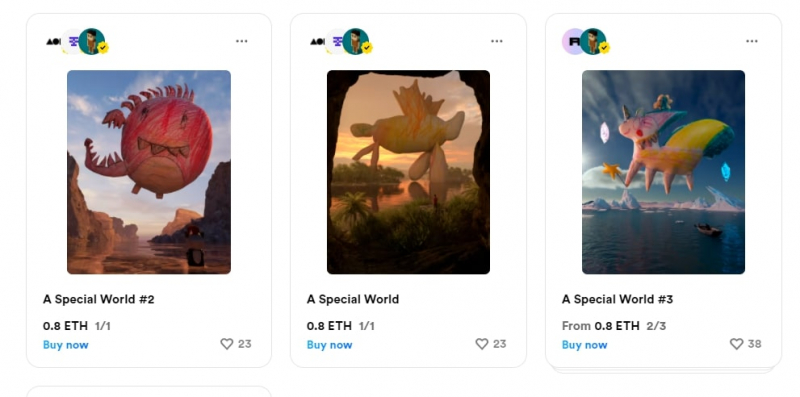
Have you ever thought that your works would be showcased at contemporary art exhibitions?
I wasn’t actually striving for this, I was glad to be a 3D designer. I used to think that contemporary art was not for me. I can’t even draw, how can I be an artist? But people like what I do. So if I can do it, why shouldn’t I grow in this field?
Are your next projects also connected to charity?
My next project after Osobenny Mir was High-Engendered Art. I used ECG to record people’s heartbeat and then transformed this data into generative graphics. Last fall, this project was exhibited at the SOVRISK exhibition in Zaryadye Park, Moscow and then at a contemporary art exhibition in Kazan. I donated 30% from the sales I did to the Detskiye Serdtsa (Children’s Hearts) foundation that supports children with congenital heart diseases.

A piece from the Heart-Engendered Art project. Animation courtesy of Daniil Zuyev
Have you finished working on Osobenny Mir?
I have around 20 drawings and I have digitized only 4 of them, so I am planning to keep working and when there are no more drawings, I will do another project with an inclusive center. I already have an idea.
Do you think NFT and charity are a promising combination?
I know that there are projects that allow artists to auction off their works and donate the money to various foundations, such as Anton Tut Ryadom or Podari Zhizn. By the way, recently Podari Zhizn has hosted a digital art auction. However, usually the works exhibited there aren’t inclusive, they are not actually connected to the cause they are serving. For instance, Podari Zhizn is organizing a new campaign that would sell the drawings contemporary artists created as kids. 100% of the revenue will go to the foundation. I am also participating in this initiative.
But I still believe that the best option is to look for lesser-known foundations that need more help. They are not yet household names and they truly face problems when attracting donations. Thanks to inclusive projects, more people would get to know about them.
I hope that such initiatives keep developing because these days kindness and humanity are especially important. We spend more and more time in the digital world sitting in front of our screens, we don’t spend as much time talking in person. That’s why it’s high time we created and promoted projects that help us make this world a kinder place.
